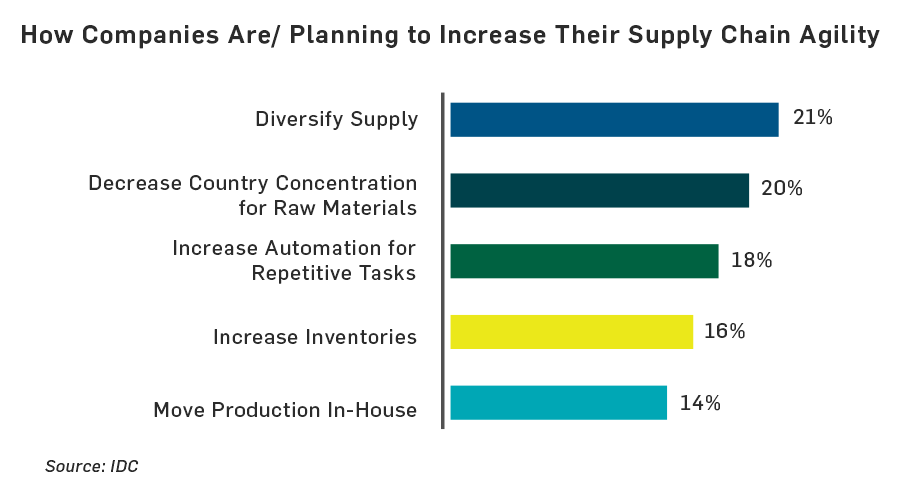Table of contents
Key Takeaways
-
Nearly half of pharma supply chain companies lack the resilience needed to effectively respond to major disruptions.
-
Only 5.6% of pharma supply chain companies say they are actively pursuing patient-centric transformation strategies.
-
Collaborating more closely with partners on a digital supply network can help organizations boost agility, responsiveness, and resilience.
The eruption of the COVID-19 pandemic was a wake-up call for companies across the end-to-end pharmaceutical supply chain—and many are now looking at ways to improve supply chain visibility, agility, and resilience, according to the results of a new IDC industry survey.
COVID-19 took us all by surprise on some level, but pretty clearly, a sizeable chunk of pharmaceutical companies simply didn't have the ability to respond to what happened in an effective way.
Additionally, nearly three quarters of respondents said their supply chain is susceptible to more disruptions as the pandemic continues.
"Companies weren't ready for this," Ellis explained. "COVID-19 took us all by surprise on some level, but pretty clearly, a sizeable chunk of pharmaceutical companies simply didn't have the ability to respond to what happened in an effective way."
IDC and TraceLink surveyed more than 500 companies to gauge the impact of COVID-19 on the pharma supply chain and found that many recognize the need for greater resilience. Some of the various efforts companies are undertaking to increase agility and prepare for future disruptions include diversifying supply, automating repetitive tasks, contingency planning, and increasing in-house production of products.

But Ellis warned that these efforts could be in vain if companies continue to embrace traditional “inside-out” or siloed approaches to supply chain management. Instead, companies need to view the supply chain holistically and work to make true patient-centricity a reality. Today, only 5.6% of companies are actively pursuing patient-centric supply chain transformation strategies.
“If you think about either how companies are preparing for future disruptions or how they're planning to increase supply chain agility," Ellis says, "all of these things will be helped immeasurably by better data, better collaboration, and the ability to interact within an ecosystem that doesn't require new connections every time there's a new supplier or new customer.”
What can you start doing—and stop doing—to boost supply chain resilience?
The good news is that there are some steps organizations can take today to begin building a more agile, responsive, and resilient patient-centric supply chain, according to Ellis and TraceLink Digital Transformation Strategist Roddy Martin, who co-hosts the webinar. Their recommended “starts” and “stops” include:
- START to analyze and resolve major disruptions by singling out the 20% of events that account for 80% of major disruptions to patient and service levels.
- START breaking down the causes of major disruptions by solvable components and processes needed to address them effectively.
- START collaborating more closely with partners on digital supply networks where patient-centric data sharing and collaboration is enabled.
- START focusing on how to improve your risk management strategy.
- STOP thinking about disruptions as your problem alone—they impact your entire end-to-end supply chain.
- STOP having dispensers and wholesalers build stock buffers while manufacturers and CMOs struggle to get the supplies they need. Closer collaboration on a digital supply network can reduce or eliminate these types of problems.
Martin added that the historical investments pharma supply chain companies made in enterprise resource planning systems and point-to-point integrations were necessary, but failed to create the types of agile and resilient supply chains that are needed today.
“It's simply not enough because we're not connecting all these partners around a digital network platform and fundamentally re‑engineering the way the network of partners works around a patient,” Martin explained. The network model “allows us to sense faster. It allows us to connect faster. It allows us to build models of data and come to really smart conclusions.”
Want to learn more? Watch our on-demand webinar for more IDC survey results.



